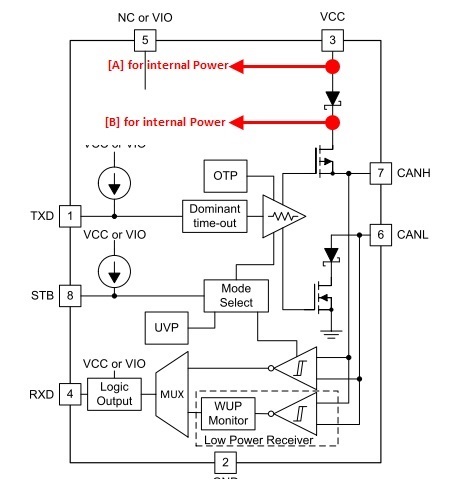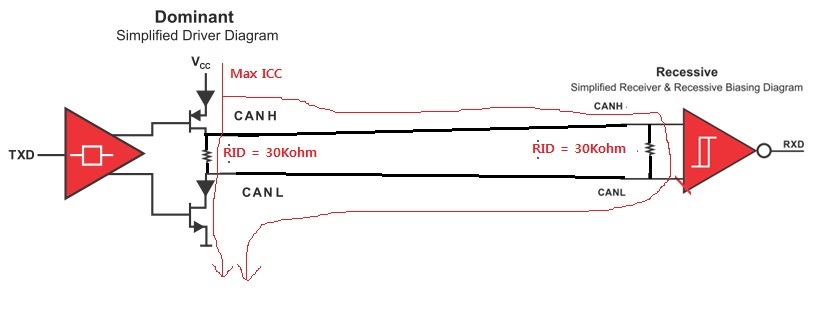Hi Team
can I get your swift reply ?
[1] VCC has blocking diode to prevent Back vias.
my question is IC's internal power line is from [A] at Anode ?
or is from [B] at Cathode ?
[2] CAN bus will has only two nodes for 1 pcs of master and 1 pcs of slave as below.
the cable length will be below 30 cm.
due to power consumption issue, I will remove two 60 ohm termination resistors.
without considering BCI/EMC noise to be coupled onto cable, resulting that degrade signal quality,
it is no problem to remove two termination resistors in terms of CAN PHY operation, right ?
[3] in that case, i would like to calculate the Max ICC at Dominant stage.
as below equation, is it ok Max 2.83mA to be estimated ?
the Max ICC at Dominant stage = ICC Max Normal mode(recessive) + ICC Max Normal mode(Dominant)
= Max 2.5mA + 5V/(30Kohm/2)
= 2.5mA + 0.33mA
= 2.83mA




